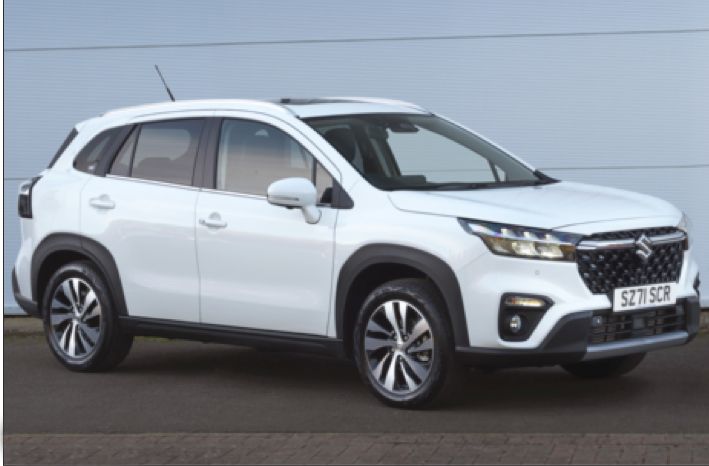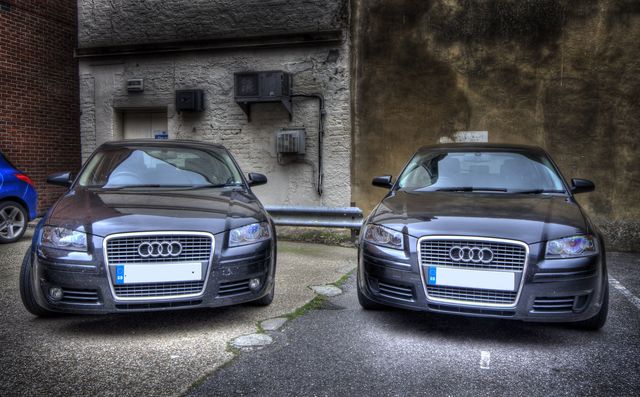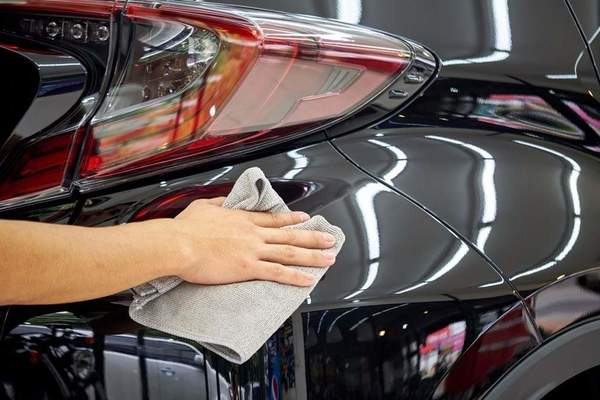THE old Suzuki S-Cross earned high acclaim for its stylish design, compact and easy to manage dimensions and good on-road performance as well as off-road capability with its optional four-wheel drive system.
It is now, however, to be replaced by an all-new model which takes advantage of Suzuki’s long-established expertise in packaging vehicles with flexibility, high levels of safety equipment and the latest technology to help meet the needs of both driver and passengers.
On the outside the S-Cross expresses Suzuki’s SUV styling heritage and the new model makes a strong statement with larger and more angular wheel arches and smooth, flowing lines. The front design incorporates a raised bonnet line, piano black front grille and new-design three LED position headlamps. This theme continues at the rear with larger combination lamps that integrate beautifully into the new car.
Inside, the new car is more spacious and versatile and is fitted to a high standard including more enhanced safety specification than that of the previous model. Standard equipment for the Motion Model is comprehensive including seven airbags, 17-inch painted alloy wheels, three LED projector headlamps, Apple CarPlay, Android Auto smartphone connectivity, Traffic Sign Recognition, Blind Spot Monitor, Adaptive Cruise Control with speed limiter, keyless entry and start, dual zone auto air conditioning, heated front seats and front and rear parking sensors, truly an impressive spec. Moving up to the Ultra Model adds 17-inch polished alloy wheels, leather seats, on-board navigation, panoramic sliding sunroof and a 360 degree camera.
This new version is available in a total of six different shades of which one is a solid colour and five are optional metallic finish. Under the bonnet is a 1.4 litre turbocharged engine which is reduced in weight and size with added response and smoother power delivery, there is also a 48V Hybrid and a PHEV available. A fuel consumption of 53.2 combined mpg for 2WD models with six-speed manual transmission is achievable.
The car is priced at £24,999 for 1.4 Boosterjet Hybrid Motion with manual transmission and £29,799 for 1.4 Boosterjet Hybrid Ultra four-wheel drive with manual transmission. Six-speed automatic transmission is available optionally on both grades at £1,350.
Skoda’s Scottish celebrations as its Enyaq takes the top honours

THE Scottish Car of the Year awards are a great indicator of just how well manufacturers are performing in the development stakes, and this year’s batch of winners in Scotland could well be your starting point when thinking about a new car.
Skoda’s Enyaq was crowned overall Car of the Year. The all-electric SUV lifted the top title in a fantastic night for Skoda that saw the company win no fewer than four categories. The Octavia was named Best Family Hatchback, Best Plug-in Hybrid and Best Estate in a truly fantastic hat-trick.
Dacia and Mazda were among the evening’s other big winners. The Dacia Sandero won the Best Small Car while its crossover sibling the Sandero Stepway took home the Best Small SUV Crossover title. Mazda’s MX-30 was Best Sub-£35k Electric Vehicle, while the Mazda CX-5 picked up the Best Used Car award. In the best Family SUV award, the Hyundai Tucson came out on top whilst the Kia Sorento won Best Large SUV.
It’s nice to see BMW back in the awards as they captured the Best Executive Car with the beautiful new 4 Series.
Suzuki’s Swace was Best Hybrid and the fiery i20 N won the much sought after Best Hot Hatch. Newcomer Genesis won the Best Luxury SUV with the GV80, and the Design and Innovation Award was won by INEOS for its 4x4 Grenadier.
Association of Scottish Motor Writers President Jack McKeown said that It has been an incredible year for the motoring industry and he went on to extend hearty congratulations to Skoda for their multiple wins in Scotland, going on to say: “Every one of the category winners is a superb vehicle in its own right and even being shortlisted is an impressive accomplishment for any manufacturer.”
Pedestrian phone danger

IN the past 12 months nearly thirty per cent of all mobile phone users have admitted to concentrating on their phone while crossing or walking near to a busy road instead of paying attention to the dangers, rising to around eighty per cent of 18– to 24-year-olds.
This lack of focus causes drivers to brake heavily or swerve to avoid a pedestrian glued to their phone instead of paying attention. ‘Smartphone zombies’, as they are sometimes referred to, walking out into traffic while on their phone has led to many angry exchanges between drivers and inconsiderate phone users, with strong words and rude gestures being exchanged, and younger people are most likely to get involved in these types of altercations
An emergency braking feature on some of our modern cars that alerts the driver to a potential hazard and can activate the brakes autonomously can help avoid or mitigate potential impact with other motorists, cyclists and/or pedestrians on their mobile phones, but it is not an alternative to paying attention to traffic.
It’s worrying to see such a high number of pedestrians being distracted by their phones and putting themselves and drivers at risk, resulting in series injury and or death.
The survey revealed that phone users are most distracted when texting, WhatsApping and using the internet, closely followed by, phoning, Facebook, taking photos/selfies and watching streamed services like Netflix or iPlayer. We all as pedestrians need to take care when around traffic, because when contact occurs only one is going to come off worse. So, please, take care when out and about. There is a time and place for phones, internet and selfies, but it is not when crossing a road, busy or otherwise.









